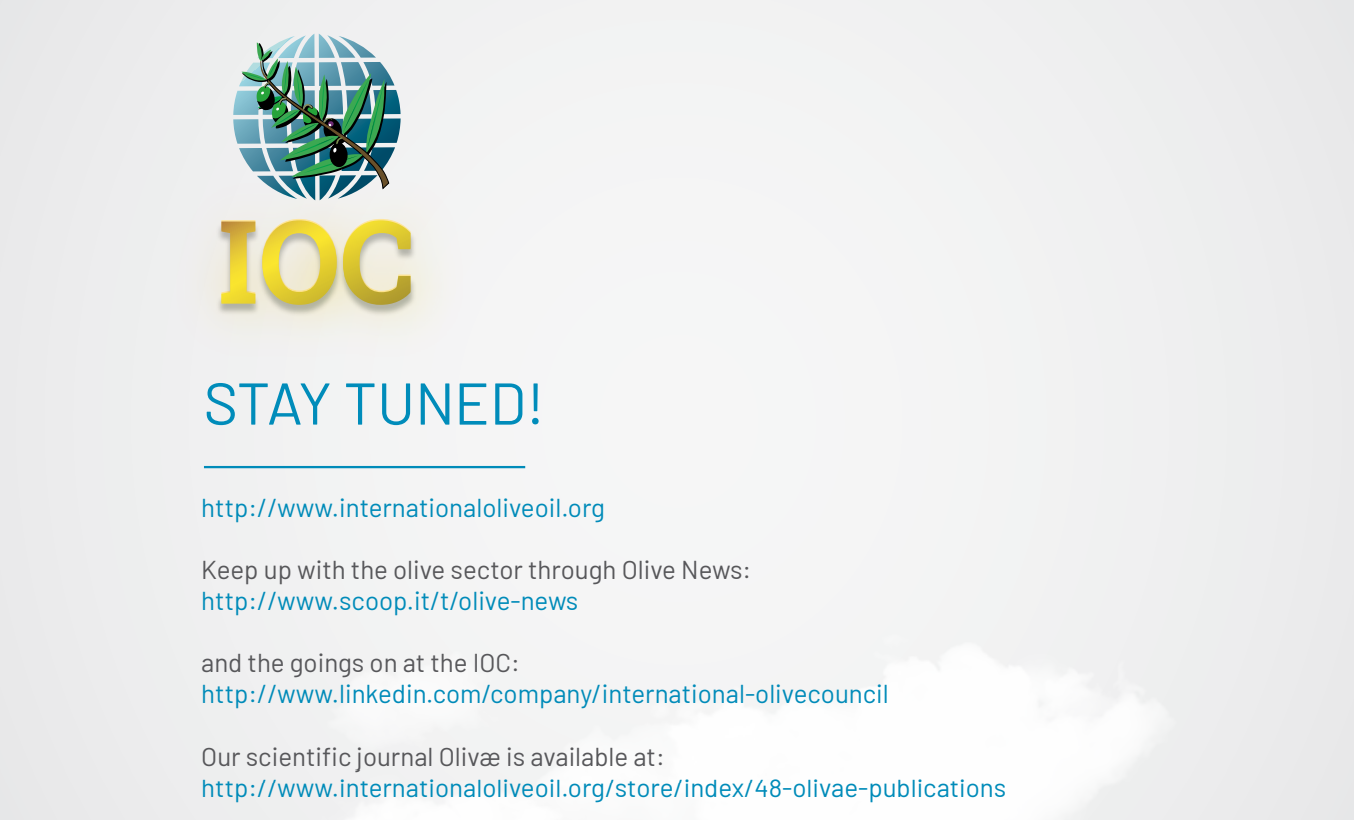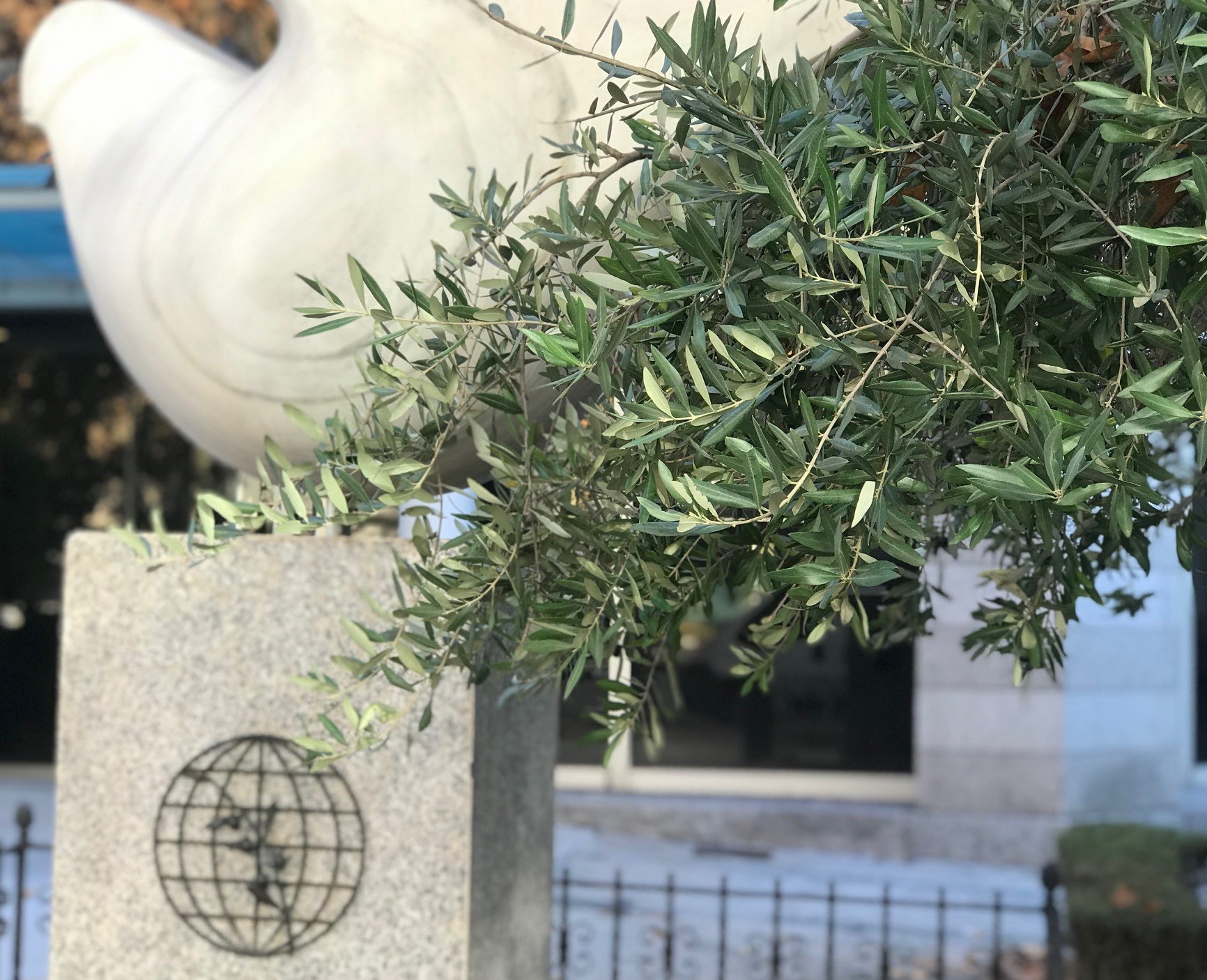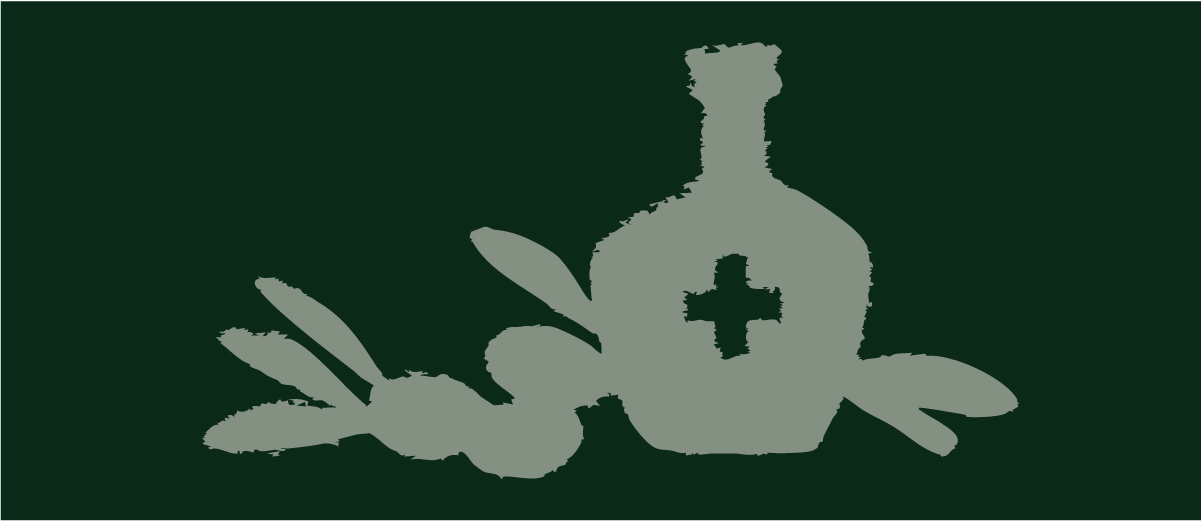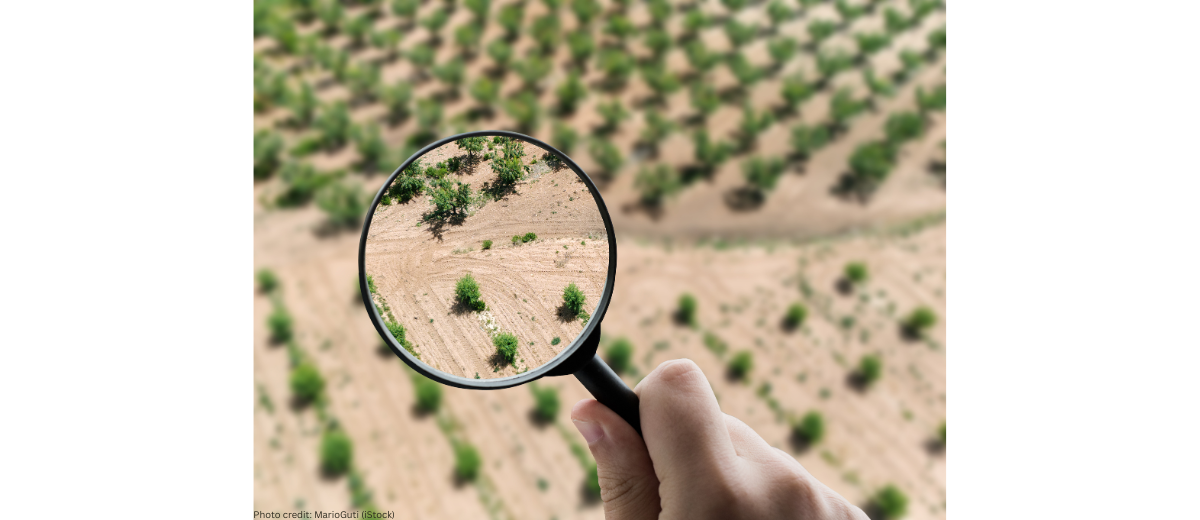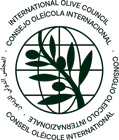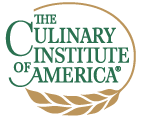Olive oil consumption almost doubled from 1990/91 to 2020/21. Provisional data for the 2020/21 crop year point to a fall of 4.4%, leaving consumption at 3 125 000 t. The estimate for 2021/22 puts consumption at over 3.2 million t.
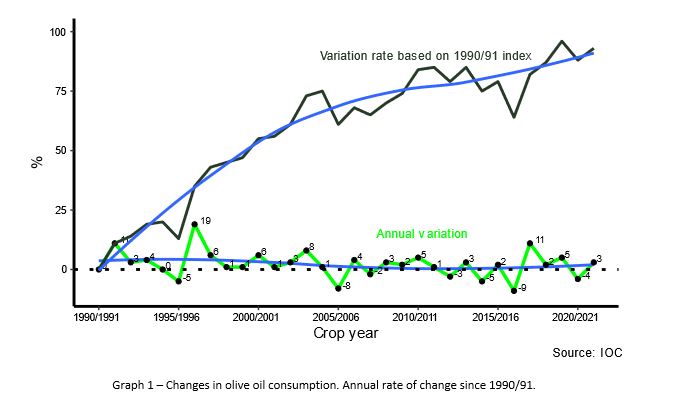
Olive oil – provisional 2020/21 crop year and estimate 2021/22 crop year. According to official data and estimates by the Executive Secretariat, world consumption could reach 3 214 500t in the 2021/22 crop year, an increase of 2.9% compared to the 2020/21 crop year.
The provisional data for the 2020/21 crop year put world consumption at 3 125 000t, for a fall of 4.4% or 143 500t less than the previous crop year.
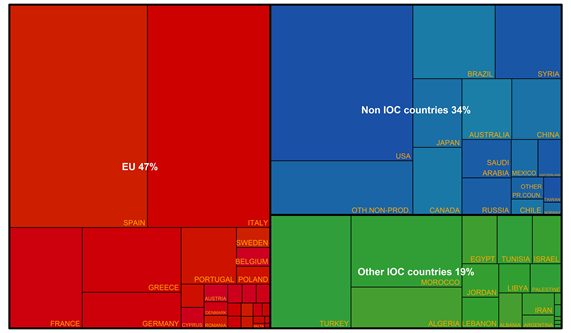
Graph 2 – Olive oil consumption 2020/21
Olive oil consumption has changed significantly in the EU. World consumption has almost doubled since the 1990/1991 crop year, and both IOC member and non-member countries have contributed to this growth. However, in the EU, consumption began to fall 2004/2005, and has continued to plunge ever since. The EU’s share of consumption has fallen from just over 70% in 2004/2005 to just under 50% in recent years.
This fall is cushioned by rising consumption outside the EU and a long-term positive trend in olive oil consumption worldwide.
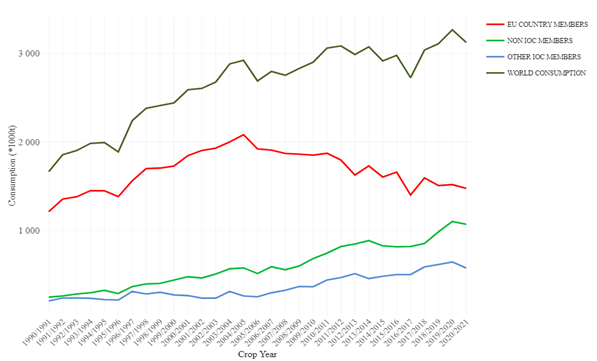
Graph 3 – Changes in olive oil consumption
Further information are available on this link: https://www.internationaloliveoil.org/what-we-do/economic-affairs-promotion-unit/
